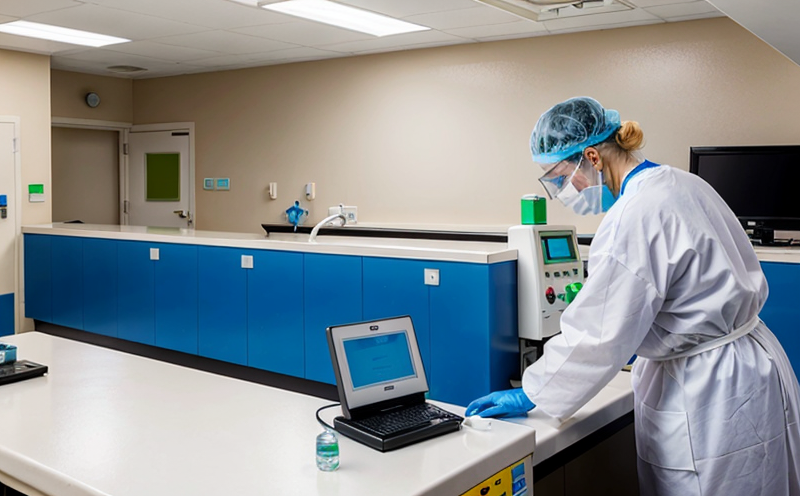Catheter Surface Contamination Testing in Clinical Environments
In today's healthcare landscape, ensuring patient safety and maintaining high standards of hygiene are paramount. One critical aspect of this is the thorough testing of catheters to ensure they do not harbor harmful microorganisms that could compromise patient health. The surface contamination of medical devices like catheters can lead to infections which are a significant risk in hospital settings.
Catheter surface contamination testing involves assessing the microbial load present on the outer surfaces of these medical devices. This is essential for understanding and mitigating potential risks associated with the use of such devices. The process typically includes collecting samples from specific areas of the catheter, culturing them in controlled environments to quantify any viable pathogens, and comparing results against set standards.
The testing protocol adheres to international standards such as ISO 17640, which specifies methods for determining the microbial contamination on surfaces of medical devices. This ensures that all tests are conducted under consistent conditions, leading to reliable and reproducible results. The aim is not only to identify contaminants but also to evaluate the effectiveness of sterilization processes used by manufacturers.
For quality managers responsible for ensuring product safety, this test provides critical insights into the cleanliness levels achieved during production. Compliance officers can rely on these findings to verify adherence to regulatory requirements set out by bodies like the FDA or EU-MDR. R&D engineers benefit from such data when optimizing cleaning procedures and developing new antimicrobial coatings.
From a broader perspective, catheter surface contamination testing plays an integral role in reducing hospital-acquired infections (HAIs). HAIs are a leading cause of morbidity and mortality globally, making it crucial for healthcare facilities to maintain stringent hygiene standards. By identifying contaminated catheters early on through rigorous testing, hospitals can implement targeted interventions aimed at preventing further spread of infection.
| Contaminant | Typical Source | Risk to Patients |
|---|---|---|
| Escherichia coli (E. coli) | Poor hygiene practices during catheter insertion | Urinary tract infections, sepsis |
| Staphylococcus aureus (S. aureus) | Contaminated hands or equipment of healthcare workers | Skin and soft tissue infections |
| Pseudomonas aeruginosa | Unclean water supply used for flushing catheters | Lung infections, sepsis in immunocompromised patients |
Why Choose This Test
- Ensures compliance with FDA and EU-MDR regulations.
- Provides critical data for improving manufacturing processes.
- Aids in reducing the risk of hospital-acquired infections (HAIs).
- Supports the development of safer, more hygienic medical devices.
- Offers a standardized method for evaluating microbial contamination levels.
Competitive Advantage and Market Impact
By integrating catheter surface contamination testing into their quality assurance protocols, healthcare organizations gain several competitive advantages. First and foremost is enhanced patient safety, which translates directly to improved reputation and trust within the community. This can lead to increased market share as satisfied patients become repeat customers or refer others.
Secondly, adherence to stringent hygiene standards sets these facilities apart from competitors who may not prioritize such measures. This competitive edge becomes particularly important during times of crisis when public health concerns are heightened. Lastly, the ability to demonstrate compliance with international standards fosters confidence among regulatory bodies and investors, further strengthening market position.
The impact extends beyond individual institutions; it contributes positively towards overall public health by contributing to lower rates of HAIs across all healthcare settings. This collective effort helps build healthier societies globally.
Use Cases and Application Examples
- Pre-Production Testing: Assessing raw materials before they are processed into catheters to ensure they meet hygiene standards.
- In-Process Monitoring: Regular checks during manufacturing to catch any deviations from expected cleanliness levels early on.
- Post-Market Surveillance: Evaluating samples taken directly from patients after their treatment ends to assess whether there were any post-use contamination issues.





